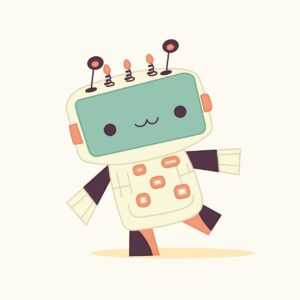
In today’s educational environments, productivity suites like Google Workspace and Microsoft Office have become essential, revolutionizing how teachers and students interact, create, and learn. In addition to increasing productivity, these tools are essential for developing digital literacy and getting kids ready for the job. I am writing about how productivity suites have been incorporated across multiple educational levels, their pedagogical consequences, privacy concerns, and the future of such tools in education, drawing on insights from a variety of books.
Productivity suites have become crucial elements of teaching and learning in both K–12 and higher education. Understanding how learning theories like behaviorism, cognitivism, and constructivism influence the creation and application of productivity tools in education is made easier with the help of the Top Ten Learning Theories for Digital and Collaborative Learning video. For example, when students utilize Google Docs or Microsoft Word for practice exercises that require repetition to develop critical abilities, behaviorism is reinforced. Similarly, constructivism thrives when students collaborate to co-create knowledge using collaboration features in programs like Google Sheets.
These resources are even more thoroughly included in teaching and research in higher education. Students use programs like Excel to do sophisticated data analysis, while Google Drive and other platforms are used for group projects and data storage. But this integration also draws attention to the problem of the digital divide. While many students gain from these technologies’ adaptability and accessibility, others—especially those from marginalized communities—might find it difficult to use them because of antiquated technology or inadequate internet connection. For all kids to have equitable access and close this gap, schools must invest in providing the necessary resources.

Pedagogy has changed as a result of the adoption of productivity suites, which enable teachers to shift from traditional methods of instruction to more interactive, student-centered learning environments. These resources give students the ability to produce, distribute, and exhibit their work in creative ways, as shown in the Overview of Productivity Software video. While students can work together in real time using Google Docs, teachers can present more interesting lessons using tools like PowerPoint or Google Slides.
These tools do, however, come with some drawbacks despite their many advantages for engagement and cooperation. Over-reliance on productivity suites can occasionally result in students having a cursory comprehension of the material, putting more of an emphasis on polishing their work than really connecting with it. The possibility of pupils’ critical thinking skills being compromised is especially apparent when they depend excessively on automated tools like grammar checkers or pre-made templates. Teachers should combine activities that push pupils to grow in critical analysis and problem-solving abilities with the usage of productivity tools.
Developing digital literacy and other 21st-century skills needs productivity suites. Students learn important skills like data management and analytical thinking through the use of tools like Google Sheets and Microsoft Excel, which are essential for their future employment. The development of these tools has focused on enhancing accessibility, flexibility, and cooperation, as noted in the article Revolutionary Software: Milestones in the Development of Productivity Suites. These developments are well-aligned with the needs of the contemporary workforce.
While productivity suites aid students in mastering the use of particular tools, they might not cover more complex digital skills like coding or a general grasp of technology. To tackle this issue, it is recommended that educational curricula surpass the fundamentals and incorporate more extensive digital literacy initiatives that motivate students to interact critically with the technology they utilize.
Significant ethical and privacy issues are brought up by the pervasive usage of proprietary productivity suites in education. The storage of students’ personal information and instructional materials on external servers raises concerns about data security and ownership. Large volumes of student data, including chat logs and assignments, are stored on platforms like Google Workspace, raising concerns about data ownership and usage.
Additionally, student data may be at risk of being exploited for commercial purposes, as tech companies can track usage patterns to target advertisements or gather behavioral data. Schools must carefully assess the privacy policies of the productivity tools they use and seek to implement robust data protection strategies to safeguard students’ information.
Educational institutions have an alternative to some of the privacy and ethical issues connected with technologies in the form of open-source alternatives like LibreOffice or OnlyOffice. These platforms provide comparable features without the dangers of data tracking. The learning curve is one of the difficulties, though, as instructors and students are typically more accustomed to using commonplace productivity tools.
Future developments for productivity suites in education are probably going to include more personalized features, collaborative tools, and artificial intelligence (AI) integration. Productivity tools may develop to offer more individualized learning experiences as AI advances, adjusting resources and information to each student’s specific need. But this begs the issues of guaranteeing fair access to AI-enhanced tools and the requirement for ongoing instruction in digital privacy and ethics.
Without a doubt, I believe that productivity suites have transformed schools by improving digital literacy, accessibility, and cooperation. To address concerns about equity, privacy, and critical thinking, their integration must be handled carefully. Teachers must take a well-rounded approach, investigating alternative technologies that comply with ethical and privacy norms and utilizing these tools to enhance more conventional instructional approaches. Productivity tools will become more and more significant in determining the direction of education as they develop.
References:
Revolutionary Software: Milestones in the Development of Productivity Suites


